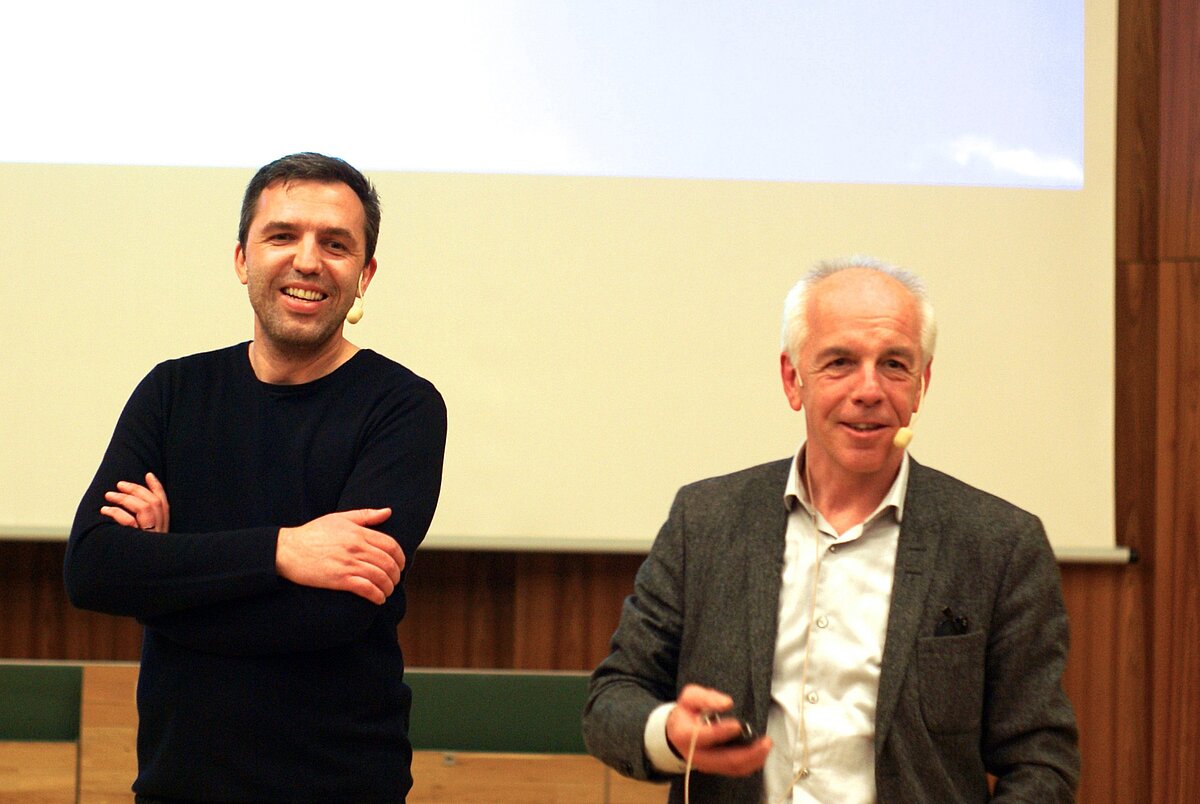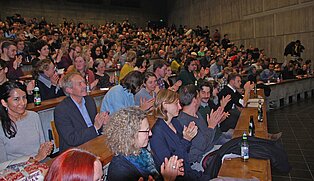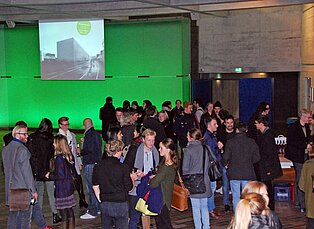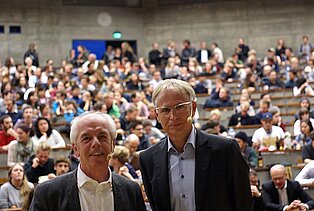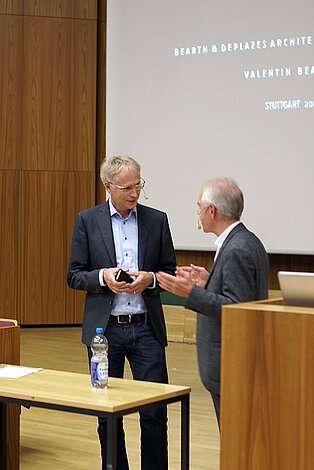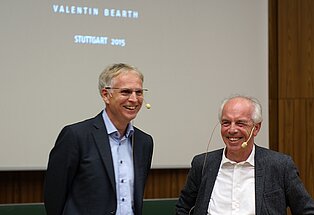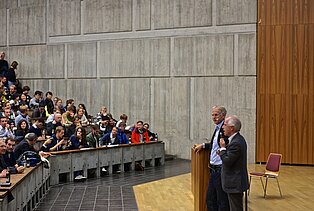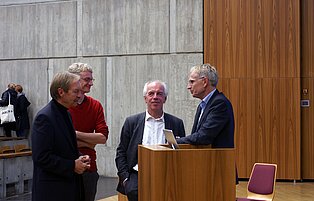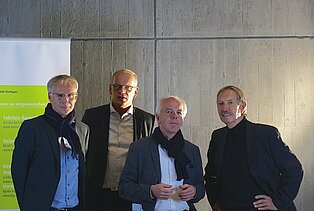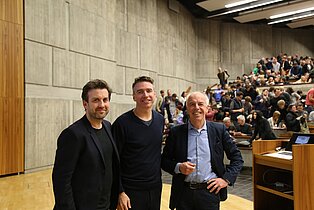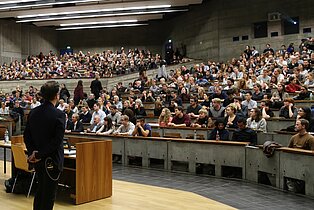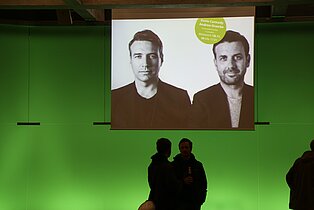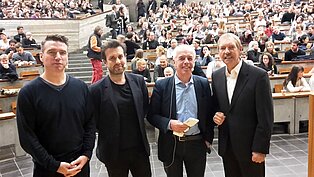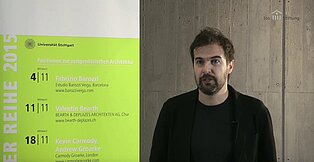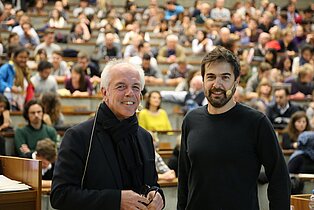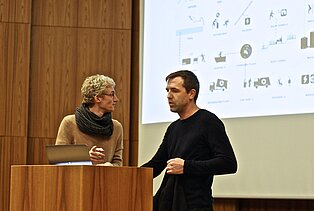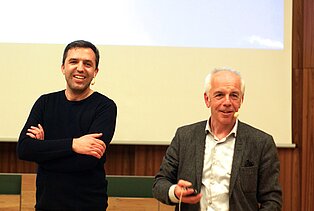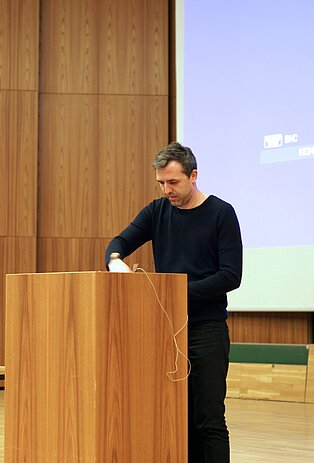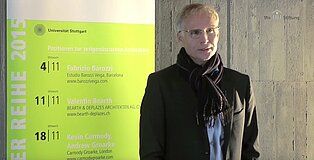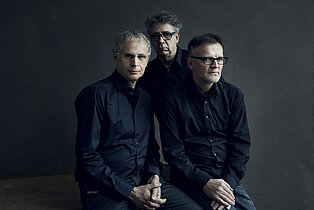Architects can change the world | Martin Voelkle
This year's November Talks in Stuttgart came to a close with a presentation by Martin Voelkle, who spoke to a packed auditorium about how BIG – the Bjarke Ingels Group – works and thinks. Advertised as the “blockbuster” of the lecture series, Martin Voelkle – a former student of the University of Stuttgart – gave an overview of the unconventional and spectacular construction works carried out by the international firm.
After a few introductory words from Prof. Peter Cheret about his career – after obtaining his degree in 2007, he worked at LAVA before moving to BIG where he is now an associate – and some memories of his student years in Stuttgart, he spoke briefly about how the firm, which has offices in Copenhagen and New York, has developed.
Hot to cold
By way of introduction to BIG's work, Martin Voelkle presented the “HOT TO COLD” exhibition at the National Building Museum in Washington, together with the publication of the same name. The Group's generally very creative approach to tasks is evident just from the way it makes use of space – in this case, how the exhibition was arranged in the foyer with the surrounding arcades: the name and layout of the exhibition and publication alone demonstrate BIG's mindset. In accordance with the Group's credo that architecture must always correspond to its location, the projects are sorted into different climate zones.
Plus one aspect
As the evening progressed, Martin Voelkle went on to explain the architectural mindset and approaches of the firm, illustrating them with a wide range of extraordinary projects. For BIG, every design begins with the development of a basic idea, taking into account location factors at every conceivable level. These range from spatial and structural aspects to social circumstances and climatic conditions. The firm also sets itself a further task: in addition to meeting the brief in terms of room allocation and fulfilling other basic requirements, each project should also provide a “plus one aspect” in order to achieve added value for its surroundings and its users.
Engineering without engines
These architects are not interested in creating a replaceable form of architecture which is largely unaffected by location factors – particularly climatic conditions – of the type now possible thanks to modern technical advances. Instead, they advocate “engineering without engines” in the sense of intelligent structures which ensure an improved ambient interior climate and sufficient living space while reducing or even eliminating the technical effort involved.
Design evolution
Soft location factors and participation – concisely summed up with the term “open source” by Martin Voelkle – play just as vital a role in the work of the architects as the design process known as “design evolution”, which involves excessive construction of models. For Voelkle, important factors in the form-finding process include the principle of the hybrid and that of “architectural alchemy”: the combination of both different uses and different typologies which, once predefined parameters are taken into account, results in new forms. Although the projects generally have a sculptural effect, this is a result of the requirements rather than mere formalism. This concept of “information-driven design” is a common thread which runs through the work of the firm.
Bjarke Ingels Group builds for the users
In his conclusion, Martin Voelkle said that BIG do not see themselves as experts in the various areas involved in construction tasks. They prefer to think of themselves as amateurs who put together information and expertise and use their insights to develop a “plus one aspect”. He sees architecture not as an independent art form, but rather as something in conjunction with the user. That is why, Voelkle says, Bjarke Ingels Group builds for the users and not for architects. He sent the enthusiastic audience home with a few final thoughts on the “naivety” which always resonates in their design processes, and his belief that architects really can change the world.


